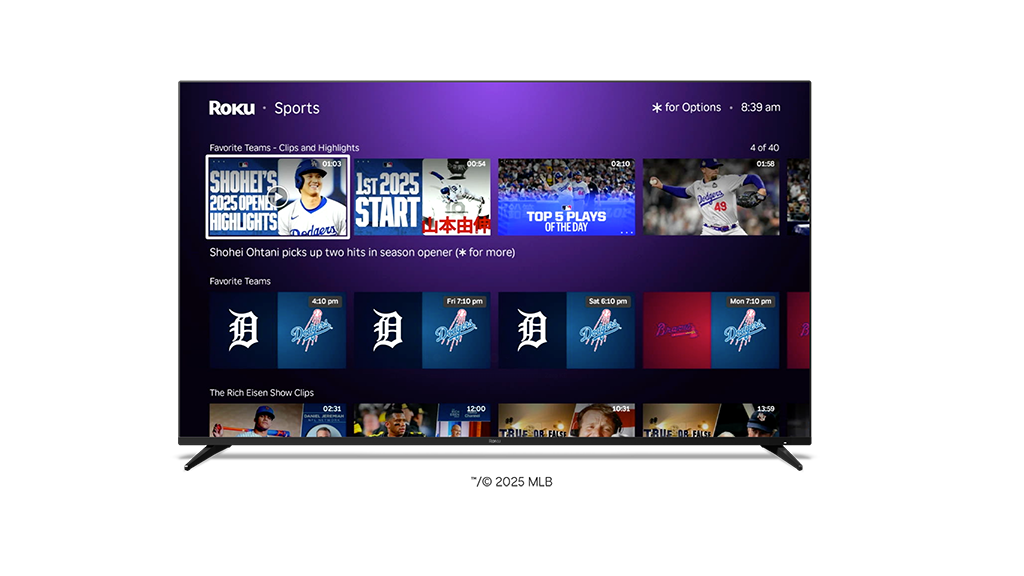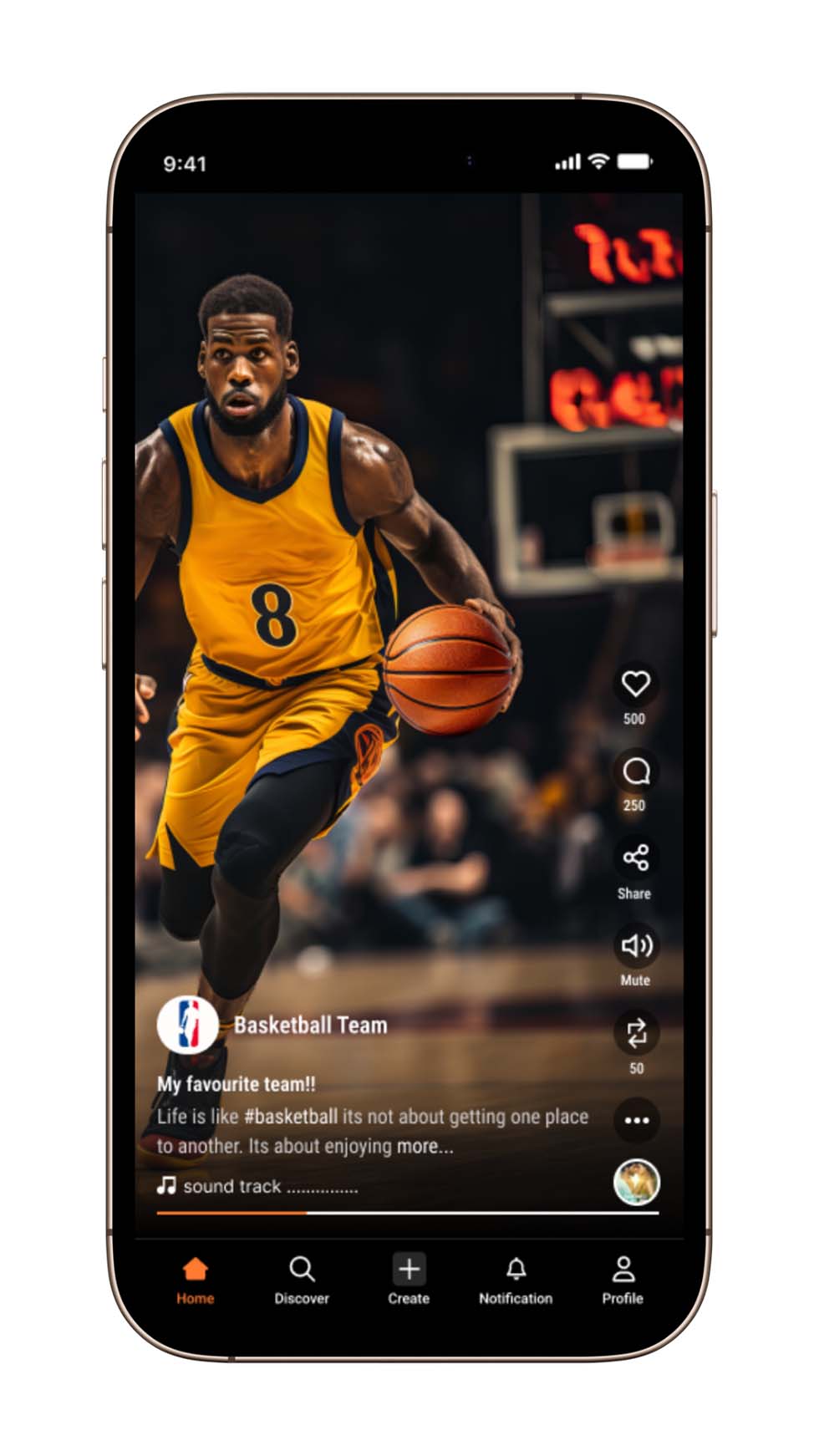Content Personalization Gets a Makeover
AI, cloud-based solutions, streaming platforms and FAST are opening up new opportunities

Content personalization has been a hot topic ever since the emergence of niche cable networks and the VCR in the 1980s allowed consumers to access content geared to their particular interests and control how and when they watched it. But in the last several years, the importance of finding better ways to tap into consumer preferences has become the key to surviving and thriving in an increasingly complex media landscape.
“Personalization really has to be top of mind,” says Preston Smalley, vice president of product management at Roku, which is working hard to maintain its position as the most popular streaming platform in the U.S. by improving the user experience with customized user interfaces, new content destination zones, better search and other efforts to personalize streaming.
Keeping Viewers Interested
As personalization has become more important, Smalley and others stress, the scope of those efforts has also expanded from its traditional focus on content discovery and on-demand offerings into a host of newer areas like live programming, live sports, free-ad supported streaming TV (FAST) channels and even broadcast TV, where ATSC 3.0 (aka NextGen TV) can deliver much more personalized content.
The wider scope of content personalization efforts also comes as consumers complain about the cost and complexity of streaming.
A 2025 survey from Deloitte found 41% of respondents said the content available on SVOD isn’t worth the price—up 5 percentage points from 2024—and nearly half (47%) said they pay too much for the streaming services they use. Large numbers of respondents (39%) also say they have canceled at least one SVOD service in the last six months, and churn rates are much higher—above 50% for Gen Zs and millennials.
That raises marketing and retention costs for streaming services and makes it harder to monetize the hefty investments in programming and sports rights. A 2024 Hub Entertainment Research survey found, for example, that 59% say it’s gotten more difficult to find the sports they want to watch.
“Personalization is clearly where the puck is going right now in terms of being able to deliver content to people on their terms and the way they want to consume it,” explains Julie Souza, global head of sports, AWS. “It’s really an important part of how you engage not only segments of your existing audience and fan base, but also how you attract and entice new fans for a sport or the content you’re producing.”
The professional video industry's #1 source for news, trends and product and tech information. Sign up below.
Metadata Milestones
Achieving those goals starts with metadata, Souza and others stress. “Metadata quality is crucial; if the metadata is insufficient or inconsistent, the recommendation system can’t make precise matches, leading to poor suggestions,” says Maria Bakirtzaki, lead product manager, Synamedia. “The quality of user interactions is also a key challenge. Inaccurate, incomplete, or siloed data about how users engage with content make it harder to accurately understand their preferences and personalize their experience.”

Gabriel Mandelbaum, vice president of content strategy and management at Mediagenix, agrees. “When embracing the personalization topic, broadcasters or streaming platforms often discover they need a metadata strategy to clean and normalize it,” Mandelbaum adds.
To address those issues, Mediagenix acquired Spideo, a search and recommendation specialist, and is now positioning personalization as a key element of its platform.
Souza of AWS stresses that several tech trends, including improvements in AI solutions and the move to cloud-based technologies, are helping companies clean up and better use their data. “More and more you’re seeing content in the cloud and being able to be indexed in a way that is searchable and more efficient,” she says.
For example, AWS worked with the NFL to “rationalize their fan data and create a unified view of their fans” that overcame problems with partial data records, duplicate data and multiple sources of data. “This yielded real results in their marketing campaigns,” she says.
Impact of AI
AWS has also been using generative AI to create customized content for sports leagues. “That results in more articles read by fans [who] increased their app utilization and average time spent,” she says. “There is a lot of opportunity there and we’re just scratching the surface.”
Balbinder O’Neil, vice president of solution engineering at Quickplay, adds that her company is using AI to create custom short videos for clients that can be monetized with ads and used to drive users back to longer-form content.

Others agree. “We can now use AI to generate the right data and give us a nice customized, personalized highlight reel from different bits of video that already exist,” explains Paul O’Donovan, senior director MK.IO product manager, MediaKind. “This is very, very beneficial for the content owners because you are actually creating new content that can be monetized.”
These AI tools can also be used to create more personalized ads and help companies find better ways to package them. “We can also analyze the content with AI and figure out the best places to place ads,” which
further improves the viewing experience, O’Donovan explains.
The importance of personalization for monetizing content also extends to subscriptions and customer retention, ThinkAnalytics Chief Technology Officer and Co-Founder Peter Docherty says.
“If you want your viewers to come back more often, if you want them to keep paying you, if you want to reduce churn, then you have to engage them in the best possible way,” he says, which means personalization is fundamental to success in a variety of areas, including addressable advertising, contextual advertising and even FAST channels.
That is making AI not only important in creating better content search engines and customized content experiences. It also affects operations by providing editorial and programming teams with tools to improve how they program their services and develop better, more personalized content, Dockerty says.
Mmaking the Game Your Own
The push for personalization has been particularly important in sports, where the migration of rights from linear TV to streaming made accessing games more confusing while also opening up opportunities to personalize the fan experience.
“Personalization in live sports is now a baseline expectation—from targeted ads and tailored audio to local language commentary, custom graphics and on-screen data,” explains Rick Young, senior vice president of global products, LTN. “The era of ‘one-to-many’ broadcasting in live sports is over.”
“Live sports has become more fractured and it has become harder to find and follow your favorite team,” says Smalley. Roku has made major changes to its user interface to make it easier for consumers to find sports content. “That is a real problem for sports fans so we’ve put together these destinations for each of the leagues to make it easier for fans.”
Sports isn’t the only type of live content companies are pushing to personalize. Zeam, for example, has been helping many broadcasters and FAST channel providers to customize and create FAST channels that offer localized content and more personalized hyperlocal experiences. “We give them tools to build FAST channels and FAST on-demand channels,” says Jack Perry, CEO of Zeam Media, which has also launched Zeamcast, a marketplace where streaming services can easily acquire broadcast content to customize and localize their programming.
Such efforts will become even more important for broadcasters as NextGen TV becomes more widely available. Built on an IP standard, it has all the capabilities to target and customize ads and content that streaming services offer.
“With ATSC 3.0, you are basically combining the benefits of over-the-air broadcast with the ability to collect data instantaneously through the feedback loop so that you can personalize for all over the broadcast channels,” Naveen Narayanan, vice president of product management at Quickplay, says. “It will mean you can start personalizing more and more of the broadcasts as well.”
“Today, early adopters we partner with are experiencing real value through addressable ads, shoppable content, interactive overlays, and intelligent emergency alerts with enhanced accessibility features,” LTN’s Young adds. “These aren’t future concepts, they’re live, monetizable opportunities, powered by infrastructure that’s in place right now.”
George Winslow is the senior content producer for TV Tech. He has written about the television, media and technology industries for nearly 30 years for such publications as Broadcasting & Cable, Multichannel News and TV Tech. Over the years, he has edited a number of magazines, including Multichannel News International and World Screen, and moderated panels at such major industry events as NAB and MIP TV. He has published two books and dozens of encyclopedia articles on such subjects as the media, New York City history and economics.

